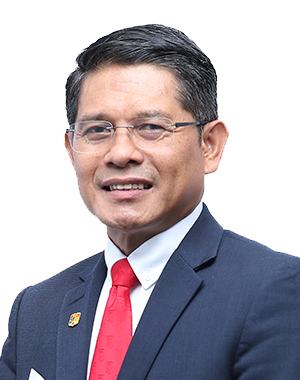Biodata

Prof. Dr. Mohammad Kassim
Department of Chemical Sciences, Faculty of Science and Technology (FST), Universiti Kebangsaan Malaysia (UKM), Malaysia.
Prof. Dr. Mohammad Bin Kassim is an esteemed academician and researcher affiliated with Universiti Kebangsaan Malaysia, with a Ph.D. in Inorganic and Coordination Chemistry from the University of Bristol, UK. His research journey has been enriched with several international faculty appointments, including Visiting Professor roles at the Faculty of Pure and Applied Sciences, University of Tsukuba, Japan (2019); Department of Precision Science and Technology, Graduate School of Engineering, Osaka University, Japan (2018); and Gifu University, Japan (2017). He has supervised 3 postdoctoral researchers, 30 doctoral students, and 36 Master’s students. Prof. Mohammad’s research interests and specialization include but not limited to Coordination Chemistry, molecular inorganic electrochemistry, molecular optoelectronics, photoelectrochemistry, conversion of CO2 to fuel, and X-ray Crystallography.
Speech detail
Sustainable Green Hydrogen Production for Malaysian Hydrogen Economy
Energy security and climate change are interconnected issues faced by nations worldwide. About 80-90% of global energy is derived from depleting fossil fuel sources, which contribute significantly to greenhouse gas emissions that drive climate change. Malaysia, a signatory of the COP 21 Paris Agreement, has committed to reducing the greenhouse gas emissions by 45% by 2030. To achieve this goal, adopting an alternative energy source such as hydrogen and fuel cell technology are necessary for achieving the target. Hydrogen serves as a clean energy carrier for fuel cells, generating electricity and producing only water as a byproduct. A major challenge in this technology is a cost-efficient hydrogen production. Due to the extremely limited availability of natural hydrogen gas on earth, producing green hydrogen from water via renewable resources is imperative. Solar energy, which is abundance and available universally, is a preferable choice of renewable energy for water splitting. Solar Hydrogen group at Universiti Kebangsaan Malaysia has been exploring various solar-driven water-splitting materials and techniques since 2002. This communication focuses on the conventional method that combine photovoltaic (PV) with electrolyzer systems, and photoelectrochemical (PEC) approach inspired by natural photosynthesis. Observations from literatures and our studies suggested that PEC water splitting is more desirable for green hydrogen production and hence, upscaling of this system is necessary to support efforts to employ solar hydrogen as one of the sources for a sustainable green hydrogen production to meet the demand for hydrogen economy in Malaysia.

